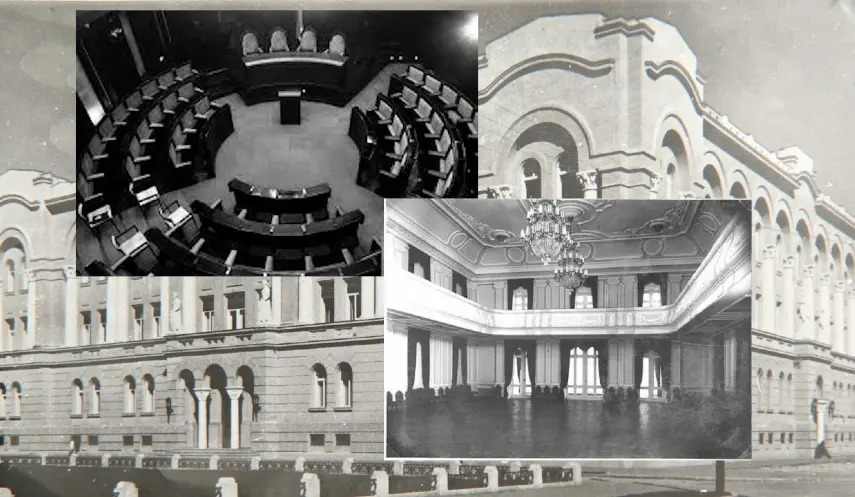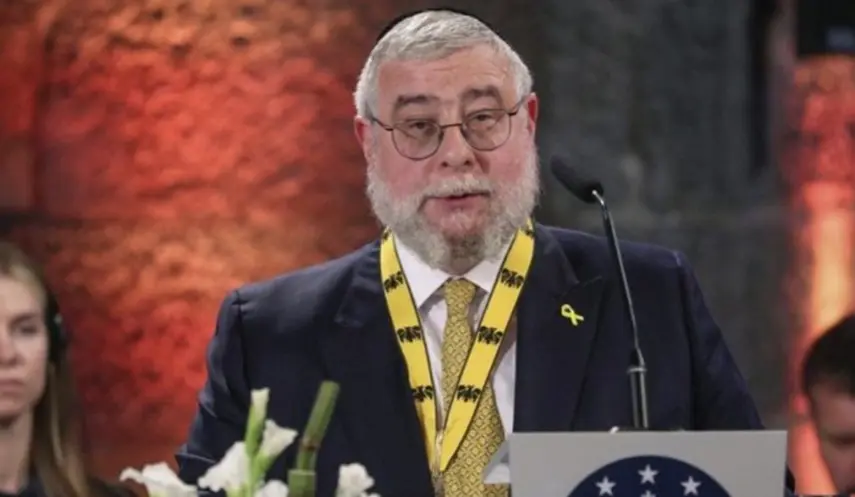A PALACE THAT STILL IMPRESSES WITH ELEGANCE, A HALL WITH ACOUSTICS
Republika Srpska - Banja Luka - sights /3/
06/04/2025
10:01

BANJA LUKA, JUNE 4 /SRNA/ - The Banski Dvor /Ban’s Palace/ in Banja Luka, a two-story palace of 2,300 square meters with 74 rooms, which still impresses with its elegance, was built by the Belgrade entrepreneur, engineer Kosta Šijački.
On the ground floor there was a magnificent reception hall, the acoustics of which still amaze musicians today. The most glamorous parties were organized there, which were only attended with invitations, to celebrate the king's birthday and the unification on December 1.
To the sounds of old town music, Strauss waltzes and popular hits of the time, ladies in luxurious evening gowns glided across the polished parquet floor, guided by the sure hand of their partners in tailcoats, tuxedos or ceremonial military uniforms.
In the other wing was the Council Chamber intended for meetings of the Ban's Council. It was the Ban's advisory body, consisting of 33 councilors from all parts of the Banate. The Council Chamber has preserved its almost authentic appearance to this day.
The door behind the podium chairs led to the "hall of the lord ban", from where the ban, accompanied by his chief of staff as a rule, went up the hidden marble stairs to the first floor, to the conference hall. In colloquial speech, it was called the "blue salon" because, originally, its walls and furniture were covered with blue brocade instead of red velvet.
On the second floor, which had a residential character, there was another series of rooms - the so-called court salon connected to the Ban's office. If there were ladies in the company, they went to the adjacent room, a luxurious salon in the style of Louis XIV, where there was a luxurious, expensive salon set. There was also a monumental dining room for 24 people.
There were two kitchens in the Ban's Palace, interconnected by a food elevator. At that time, a room with two large refrigerators was also a special feature. The building had a ventilation system and a modern boiler room for central heating. In the central part, the Ban's office was representatively furnished, where he spent his working day.
The ban's apartment was on the second floor in the western wing, while the eastern wing was intended to accommodate the king and high-ranking officials visiting the banate. The king was supposed to come to the ceremonial opening of the House of King Peter I the Liberator in October 1934 - today's building of the National Theater of the Republika Srpska, but he was assassinated in Marseille on October 9.
This part was never fully furnished. Since after the death of the fourth ban - Todor Lazarević, the Vrbas Banate was without a leader, the Educational Department of the Banate Administration moved into this space before the war.
The Banate Palace building has three entrances that are vaulted with balconies. On each balcony there are two female statues made by academician Đorđe Jovanović. The statues depict Queen Marija Karađorđević. They carry a shield bearing the coat of arms of the Kingdom of Yugoslavia.
This famous sculptor also made busts of King Aleksandar and Queen Marija, which were placed in niches on both sides of the stage in the large concert hall.
On the front facade of the Banski Dvor building, above the central windows on the second floor, there was a double-headed eagle with the coat of arms of the Kingdom of Yugoslavia. During the Independent State of Croatia /NDH/, the eagle was removed and a chessboard was placed in its place. In the first days after the liberation in 1945, the chessboard was replaced by a five-pointed star.
For decades, the Banski Dvor was without any signs, and in 2024 the double-headed eagle was restored, but without the authentic coat of arms of the Kingdom of Yugoslavia. /to be continued/

GOLDSCHMIDT: STILL WAITING FOR APOLOGY FROM BiH AUTHORITIES

POSSIBLE COOPERATION BETWEEN ALMAZOV RESEARCH CENTRE AND UNIVERSITY CLINICAL CENTRE

SARAJEVO "TROIKA" WANTS TO WEAKEN SNSD - THE BIGGEST OBSTACLE TO UNITARY BiH



